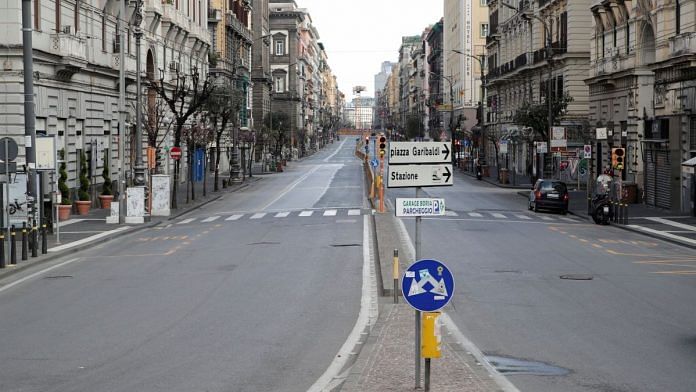As the coronavirus pandemic continues its sweep through the U.S., India and Brazil, the dreaded second wave is now gathering strength in nations that had once contained the virus. Numbers are rocketing upward, especially in Europe, even as winter approaches, which will bring the added burden of seasonal illnesses such as influenza. Attempting to tamp things down, and to avoid overwhelming their health services, authorities in France, Germany and the U.K. are now considering stronger social distancing measures, with others — including in Ireland and Israel — ordering short, strict “circuit breaker” lockdowns.
Yet if anything is as ineradicable as the coronavirus, it’s the fervid conviction of many that strict lockdowns actually bring worse consequences than Covid-19 itself. The lockdown skeptics — which include some scientists — argue that lockdowns entail massive economic damage as well as disruption to social communities and an increase in inequality. We’d be better off, they claim, if we instead aimed for herd immunity by letting the virus infect the young and healthy while protecting the vulnerable.
Some have portrayed the debate as reflecting a growing scientific divide, although this is far from the case. Almost all public health authorities come down against the herd immunity idea. Unfortunately, too much of the debate has been marred by confusion over why and when epidemiologists think lockdowns can play a beneficial role, and why the skeptics’ vision falls short.
It’s fair to say that both sides of the debate have at times misrepresented their opponents. Some lockdown skeptics make it seem as if proponents favor permanent lockdown until a vaccine comes along, whereas most see lockdowns as a drastic tool to be used over short periods of time — an emergency step, like dropping the control rods into a nuclear reactor about to melt down. Meanwhile, skeptics are criticized for wanting to just “let things rip,” too bad about the old and susceptible — yet most actually emphasize trying to protect the vulnerable.
Get past the politics, and some numbers help bring one thing into focus: why, in the absence of a coronavirus vaccine, lockdowns may be essential. Epidemics grow fast, and there’s an inherent asymmetry between the ups and downs of the numbers: Without excellent testing and tracing, it takes a very strict lockdown to get numbers falling, whereas achieving explosive growth in cases is very easy.
Also read: UK’s Covid virus deadlock is indicative of a bigger challenge several countries will face
Take the U.K., for example. Its cases have risen steadily since mid-August, after earlier restrictions were relaxed and the government encouraged people to return to work. On Sept. 21, government scientists projected a worst-case scenario of around 50,000 new cases a day by mid-October in the absence of new restrictions, and they were lambasted by skeptics for spreading fear. Yet even this worst-case picture wasn’t too far off. With new cases now at 20,000 a day and doubling every seven to 10 days, the U.K. could reach that 50,000-a-day mark quite soon — and soar well beyond it thereafter.
Based on their modeling, advisers to the U.K. government in September advised a short circuit-breaker lockdown, which the government decided against. The same advisers have again suggested that a two-week lockdown starting Oct. 24 could save thousands of lives and bring viral numbers to a more manageable level. None of these scientists suggest long lockdowns, but they emphasize that short ones can reduce viral numbers temporarily — effectively resetting the clock — while minimizing economic and social costs. The timing and extent of such interventions is crucial.
The skeptics rightly decry these costs, including the disruption to children deprived of normal educational experiences. They argue this could all be avoided if the virus was left to spread among the young and healthy while older people and those with certain underlying conditions were protected. Yet such protection — for which skeptics rarely spell out many details — seems impossible, given the mingling of younger and older people in many households, and many of the vulnerable relying on younger carers. Regardless of age, many are suffering from the lingering effects of long Covid.
The justification for lockdown remains the same now as it was back in the spring — to get numbers down, keep hospitals from being overrun, and buy time to develop much better tracking and tracing capabilities. As many people have pointed out, lockdown is just one crude tool for fighting Covid-19 (along with mask wearing, hand washing, social distancing and working from home), and it wouldn’t be necessary at all with tracking and tracing capable of keeping the virus from finding new victims. But many nations are a long way from that. Until then, getting by without the crude lockdown tool seems unlikely. – Bloomberg
Also read: Covid-19 is more serious for the elderly. So what?



